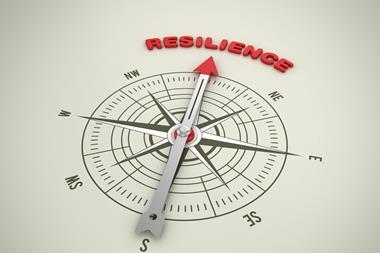The need to approach the risks of decision making in a disciplined way is common to all organisations. The Institute of Risk Management (IRM) therefore plans to launch new programmes this year that meet the needs of people who want to apply good risk management practices in their work, whatever it is.
The essential value of risk management is that it leads to better decision making, because it creates the ability to manage uncertainty. People in all sorts of organisations have to take decisions and, of course, want to do it in an informed way, but we never have 100% of the information that we think we would like. If we always want more research, more information, decisions are put off to the point where the opportunity has gone. In my organisation, we call that paralysis by analysis.
Thus, we have to be able to make decisions based on the information that we have. Sometimes, it is only 50-60% of what we would like, but the risk management process gives the confidence to assess the uncertainty and proceed on the basis of what we do know.
Although the focus of risk management education has traditionally been the insurance industry, there is also a whole body of people who manage risk within their organisations, either expressly as part of their job description or implicitly, because it is part of the framework of their role. They might never want to do the whole IRM associateship, but they still want some basic grounding in the core elements of risk management.
New courses
To meet this need, the IRM is looking to launch two new offerings this year. We are developing a certificate in risk management, as well as training courses for people who feel they would gain from a greater understanding of the process without necessarily wanting the commitment of studying for a formal qualification. The education committee is currently working on the structure and content of the certificate.
We are considering a condensed version of the associateship. We are not talking about diluting it, but condensing it to the key elements, so that rather than having to spend three to four years to achieve what is the equivalent of a post-graduate qualification, people can take a certificate of risk management which will give them the fundamentals. There might also be the possibility of dispensation given to holders of the certificate who later want to go on to associateship.
The second theme we are developing is courses for people who would gain from a few days of training based around the risk management standard.
The latter was published in 2002 by IRM in conjunction with the risk management trade associations AIRMIC and ALARM, and is now in use worldwide. These courses will be aimed particularly at the heads of smaller companies and also at senior managers in medium sized firms where there is no dedicated risk management function. Every opportunity will be taken to develop and deliver programmes in cooperation with other professional organisations, in order that they are tailored to the specific needs of different sectors and skill bases.
Last year, the IRM's education committee developed and launched a brand new syllabus and student support framework for the associateship. This is now up and running, with student numbers well up on previous years.
This qualification has been short-listed for the prestigious StrategicRISK European Risk Management Product of the Year Award, indicating just how much has been achieved. This year, the committee is taking this progress further by developing the programme for the certificate.
Initially, we expect to offer this new qualification to non-members of IRM and to members of sister institutes and organisations with an involvement in risk. Indeed, all the feedback we have so far suggests a real demand for this type of programme. This development will build on existing close associations, for instance our cooperation agreement with the Association for Project Management.
Another sector where there is potential demand is from treasury and financial managers. Their jobs involve a heavy element of risk, and we believe it would give them a degree of comfort if they had some formal training and accreditation. Here, we are not talking about the very specific mathematical techniques used to manage financial risk, but about risk in the generic sense. In their decision making, treasury managers need not only the output of their models, but also a round view of how they are working within the organisation so they can see other risks involved, like reputational risks for example. Anyone making decisions like this needs a 360 degrees view, not just a narrow focus. Making decisions in a purely functional way will not produce sound decisions.
Then we are looking to explore the education options with other associations, such as those for actuaries and accountants. We already have a close relationship with the Chartered Insurance Institute (CII). The Financial Services Authority (FSA) has also given us its support and is very keen to see our certificate developed as a vocational qualification.
Traditionally, risk management education was strongly linked to insurance and tended to focus on brokers, underwriters and claims people from insurance companies. However, our movement into the field of professional risk managers is such that half our members are now also members of AIRMIC. We believe that our membership will continue to diversify to reflect the wider understanding of risk management and the value of the risk management standard.
It is clearly important that the IRM responds to these exciting opportunities in order to ensure that it maintains its position as the risk management education provider of choice.
- Ian McNeil is chairman of IRM and national risk manager for Zurich Risk Services, www.theirm.org.



















